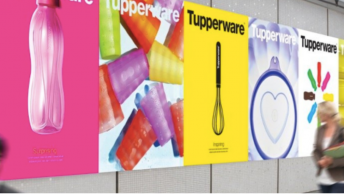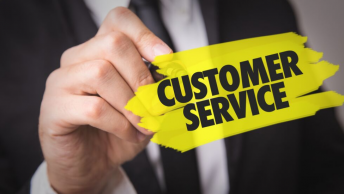Just because your business is small doesn’t mean it can’t be profitable. Your small business brand can get you the attention you’re looking for in three simple steps.
3 Steps to Build a Profitable Small Business Brand
A more modest business usually implies a smaller workforce. These three steps will make it easier for you to manage your brand while generating an online presence that will build your business.
Step 1: Define Your Small Business Brand
Defining your small business brand is about getting clear in your message and how you’re uniquely positioned to serve your audience. If you’re speaking to everyone, you’re speaking to no one. This is so important to grasp.
When asked: what do you do? You need to have a central focus. You can’t just go on about your services and offerings. This doesn’t tell your target audience who you are, and will leave them confused.
If your target audience is confused, then they will leave and find your competitors who have been clearer with their objectives.
Create a Pitch
A solid pitch will allow you to distill down to the purest form, precisely who you are, and what you offer, and that focus can help to set you apart from all the competition.
Understanding what you want from your digital brand will make the process of digital branding so much more straightforward.
Your pitch is what will define you throughout the internet, so write down a few sentences that say who you are. Your pitch should include your name, your company, your product, who your target customers are, what makes you unique, and a call to action. These inclusions will make it easy for your target audience to know they’re in the right place when they read your name.
It is important when writing your pitch to make sure that you have prioritized clarity over cleverness. If you try too hard, your target audience will see that and be turned off, or they might not be able to understand your pitch at all. Be concise and be specific to get the best results from your pitch.
Create Your Small Business Brand Slogan
It’s essential to have a brand slogan in the digital space because we don’t spend that much time doing research online because there are too many options. So you must establish your brand slogan and display it online to gain the attention of potential customers quickly.
Again, this is important because, in a world where people are surfing the Internet and bouncing off pages, you’ve only got a few seconds to communicate what it is you have to offer.
When you create your brand slogan, you want to be unique. This is just a few words that people will associate with you that will define your brand. There are a few slogans that come to mind immediately when you think of businesses. Slogans like ‘Just Do It,’ ‘Can You Hear Me Now?’, ‘I’m Lovin’ It,’ and ‘Because You’re Worth It’ are almost synonymous with their brand’s names.
Your slogan may not be this catchy, but it should stand apart from any other business you’re competing against.
Find the Intersection
If you were to make a ven diagram with customers and products, that sweet spot in the middle is where you have the opportunity to make the most significant impact on your following.
Find the place where your product or service will intersect with your target audience and then talk about it. Make your audience aware of what they are missing. Fill in the overlapping circles with your small business.
Step 2: Build Your Small Business Brand
Before you get involved with a business physically, people almost always look them up online. This means that in most cases, your target audience will interact with your digital brand before they associate with your physical brand.
So how do you make your small business brand ready for digital searches?
Build a Home Base
To ensure that our audience gets the right information the first time, you must focus on building your home base. For most of us, our home base is our website or blog.
Your home base is a critical component of your digital brand. No matter how tech savvy you think you are, you must have a visually appealing home base.
If the purpose of your home base is just to showcase your brand or to allow people to get to know who you are, Wix, Weebly, Squarespace, or about.me are viable options.
They’re simple, easy to use, and cheap.
If you require little bit more functionality, building a self-hosted WordPress website is a great place to start.
If you are serious about your digital branding, I highly recommend a self-hosted WordPress website.
WordPress makes it easy to create a webpage that has some pretty sophisticated functionality. You can utilize things like shopping carts, blogs, and message boards without knowing how to program a single piece of code by using platforms like WordPress.
When creating your webpage, make sure that your name and logo are accessible and appealing. Your logo is what people will recognize you by and will set the tone for your home base. They even can elicit an emotional reaction. Think carefully about the logo and name you create when working on your home base.
Build Your Email List
If you want to succeed in digital branding, get serious about building your email list. Your email list is one of the most valuable assets for your brand because it allows you to initiate contact with your followers.
There are a few ways for small businesses to grow their email lists. The first is to offer an incentive. This is how you woo your target audience and help them to realize you have something valuable to provide them with.
Another way to grow your email list is to add an invitation to join your email list on a physical form. Your physical forms can include business cards, direct mail, receipts, packing slips, invoices, door hangers, and magnets. These work similarly to an opt-in form on your website, but take place in the real world.
Adding an opt-in form on your website is also a great way to get your target audience’s attention and encourage them to sign up for your email list. You can include these on the side of your website, the bottom, or as a scrolling pop up. It all depends on your target audience.
Build Your Social Media Accounts
Your primary objectives for building your social media accounts is to focus on how to be social, not on how to do social.
Being relatable to your target audience will separate you from the competition. Engage on social media the same way you would engage in the real world.
When first starting out on social media, it is important to remember to only focus on one site. Having too many accounts can be overwhelming and keep you from being truly successful on any of them.
Facebook is usually the most popular channel to start with because of it’s over a billion users. However, it is important to be strategic when posting on Facebook and deciding on using free or paid for content options.
SEE ALSO: How to Prepare for the Facebook Newsfeed Update
Instagram is the fastest growing social media network. This is a great place for small business brands to showcase their products to younger generations in the form of pictures and video. However, using Instagram will require a working knowledge of hashtags.
Twitter is also a favorite way to communicate with your target audience, although it might take up more of your time than other social media sites because its users expect more frequent posting.
Step 3: Manage Your Small Business Brand
This is a part of your digital brand that will remain a part of your day to day work. Sometimes it can be in your best interest to find digital branding services that can help to manage this work for you.
SEE ALSO: Monitor Your Digital Brand
Guest Blogging
Most bloggers spin their wheels trying to increase traffic on their blogs while overlooking the fact that writing guest posts from other blogs where somebody else has a more prominent and different audience than you will increase your visibility!
When picking a place to guest blog, it is important to remember your small business’s values and choose a blog that has similar values. You’ll also want to check the guidelines of the blogger to see if they accept guest posts. If everything lines up then you can contact them and share why you’d be an excellent fit for their blog.
Repurposing Content
When repurposing your content you essentially, create one big piece of content that you can then slice, dice, and repurpose into a smaller material. This quick way of creating content will make it easier to have enough options for your audience to build a profitable digital brand.
Final Thoughts
Having a small business doesn’t mean that your company shouldn’t have a helpful online presence. By defining, building, and monitoring your small business brand, you’ll have an online presence you can be proud of and will see positive growth from your efforts. Following these steps might just make it so that you aren’t a small business in the next year. Who knows?
Does it make a difference to you when a business doesn’t have a website?











